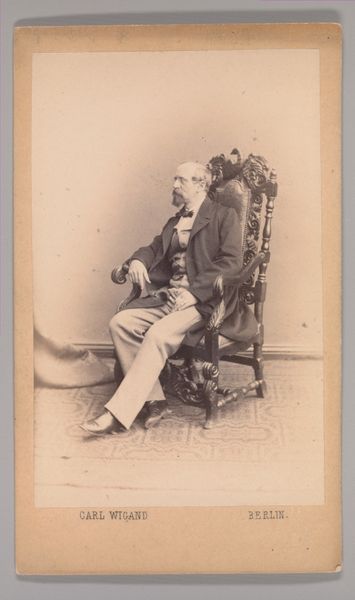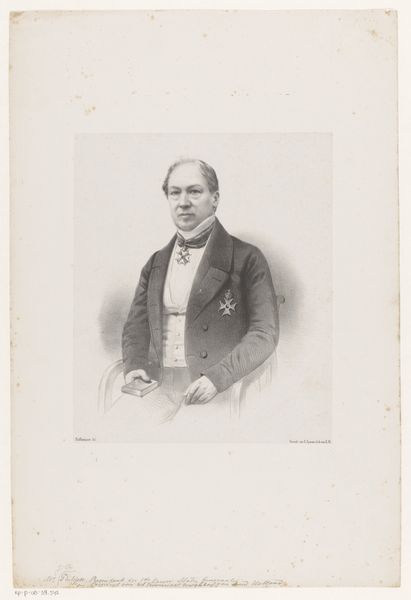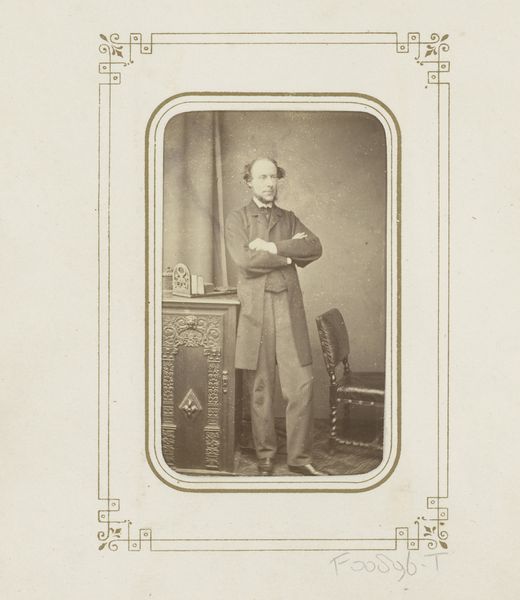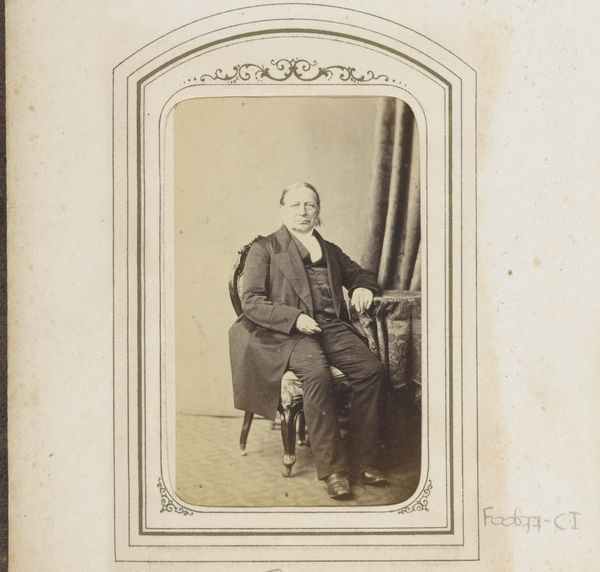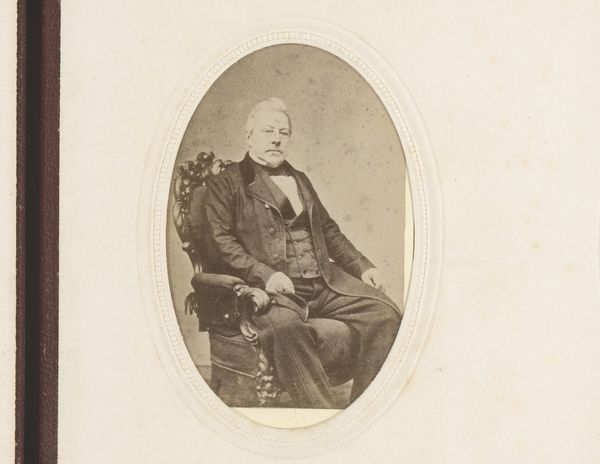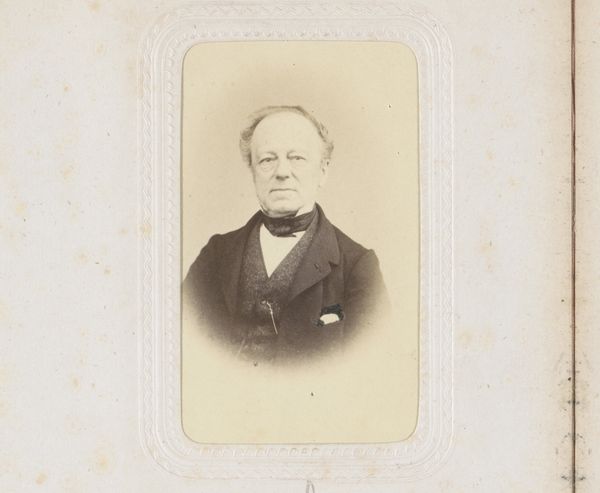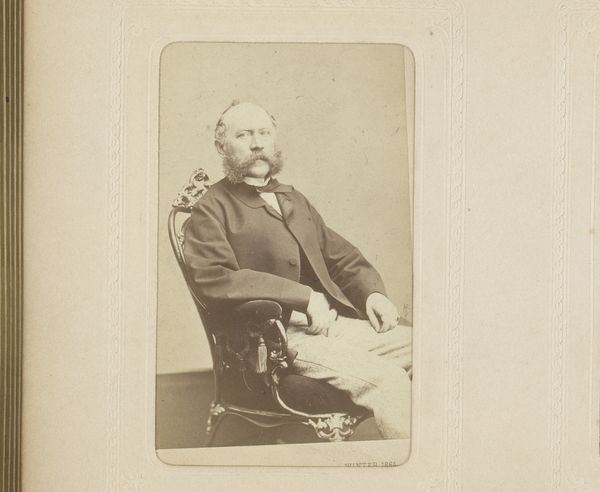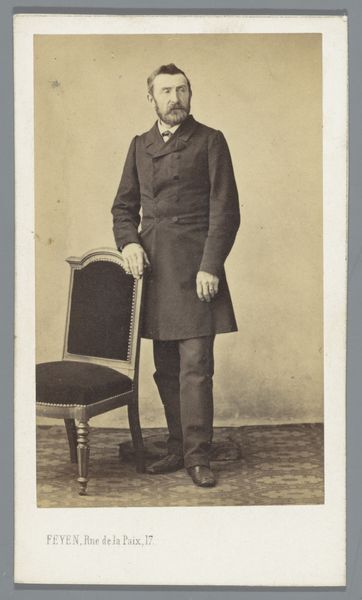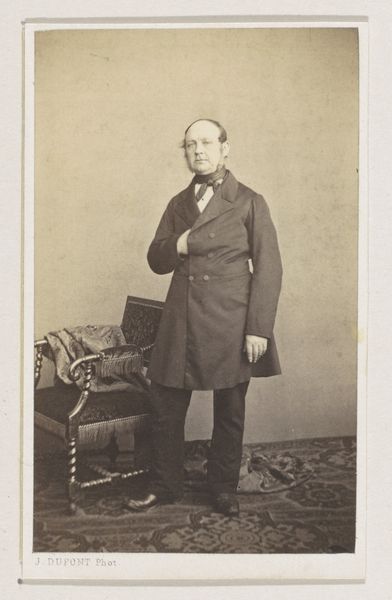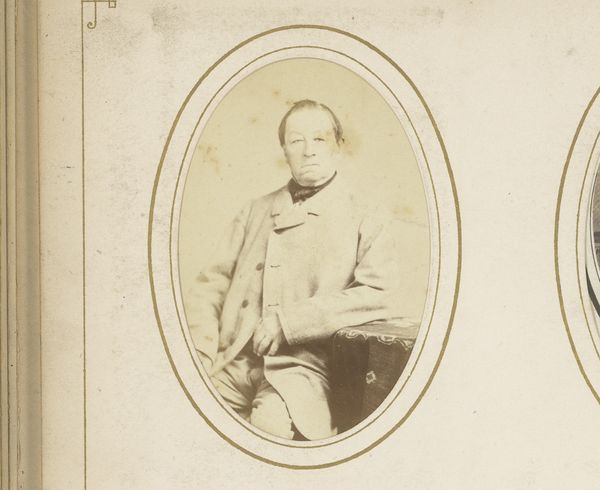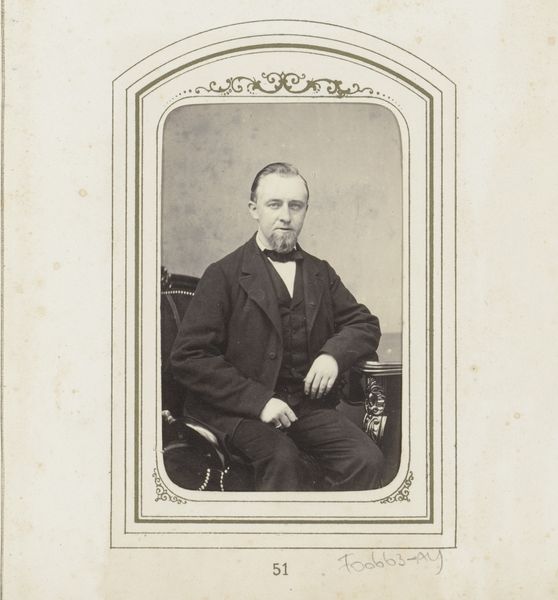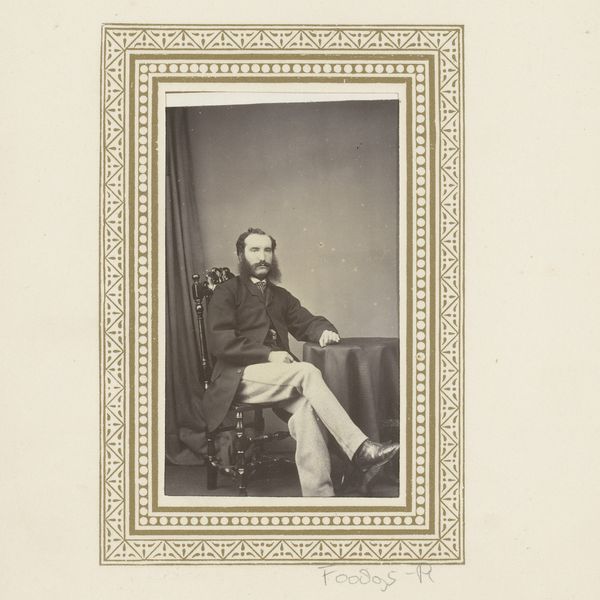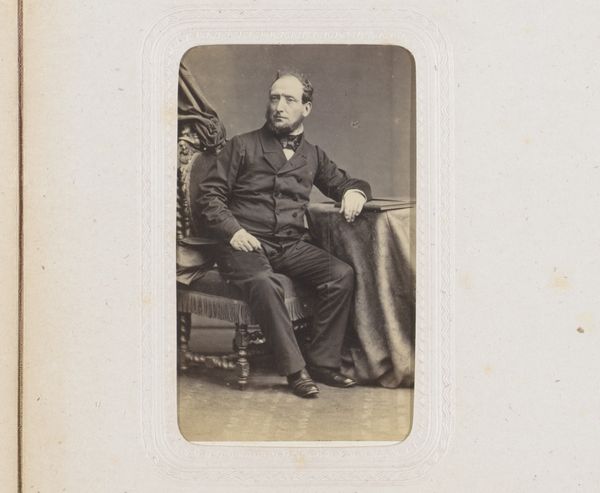
photography, gelatin-silver-print
#
portrait
#
16_19th-century
#
photography
#
historical photography
#
historical fashion
#
gelatin-silver-print
#
19th century
Dimensions: Oval: 18 1/4 x 15 5/16
Copyright: Public Domain
Curator: What a wonderfully composed portrait! There’s a gravity to it. Editor: There is, isn’t there? And so formal. I can almost smell the chemicals in this gelatin-silver print! Curator: This portrait of Charles Dickens comes to us from the studio of J. Gurney & Son, and it was produced around 1867. Look at how carefully Dickens is presented, every detail contributes to the image we're meant to receive. Editor: Every detail speaks to wealth, doesn’t it? The velvet of his jacket, the rich dark wood of the chair... It all emphasizes Dickens' status as a celebrated author and public figure. I wonder about the photographer’s labor in producing this print and how many were made at the time. Curator: The commodification of celebrity! Absolutely! These portraits became part of a booming market, didn't they? They fed the public's hunger for images of famous figures, influencing perceptions and shaping legacies. Editor: Photography played such an interesting role in the creation of the celebrity. To be able to reproduce images en masse changed things and really transformed Dickens into a cultural icon. Think about the quality of the paper, too, and the silver. The materials were valuable! Curator: Indeed. He was no longer just a writer, but a brand! The image was circulated widely and fueled the Victorian cult of personality, impacting politics and readership. But beyond the surface, is there vulnerability? A certain melancholy? Editor: There might be... but it's really hard to get past that careful staging. The lighting, the pose. Everything is so meticulously controlled. To what extent are we really seeing Dickens? Or just a carefully crafted facade for the public eye? Curator: Perhaps it's both. After all, these photographs allowed many in Victorian England, including the working classes who yearned for a world beyond their reach, to envision their heroes in intimate settings, making them more relatable figures and fueling their aspirational dreams. Editor: Interesting how the very materiality and reproducibility of the photograph shaped that aspiration. Thinking about how photography democratized art but was, at the same time, so steeped in capitalist desires and the control of imagery... that's the paradox that stays with me. Curator: Indeed. We can explore that intersection in more detail!
Comments
No comments
Be the first to comment and join the conversation on the ultimate creative platform.
